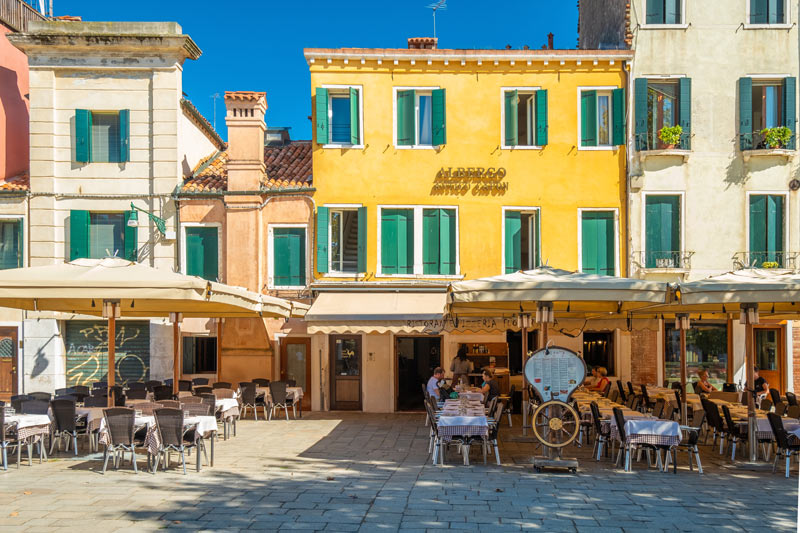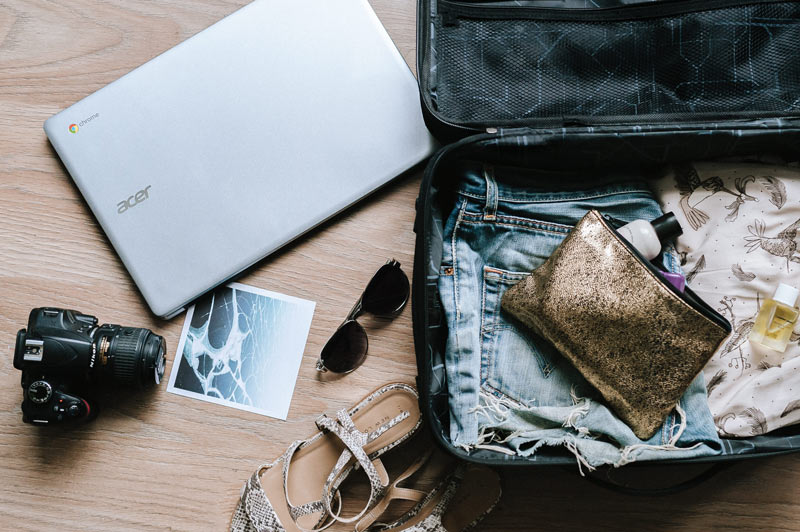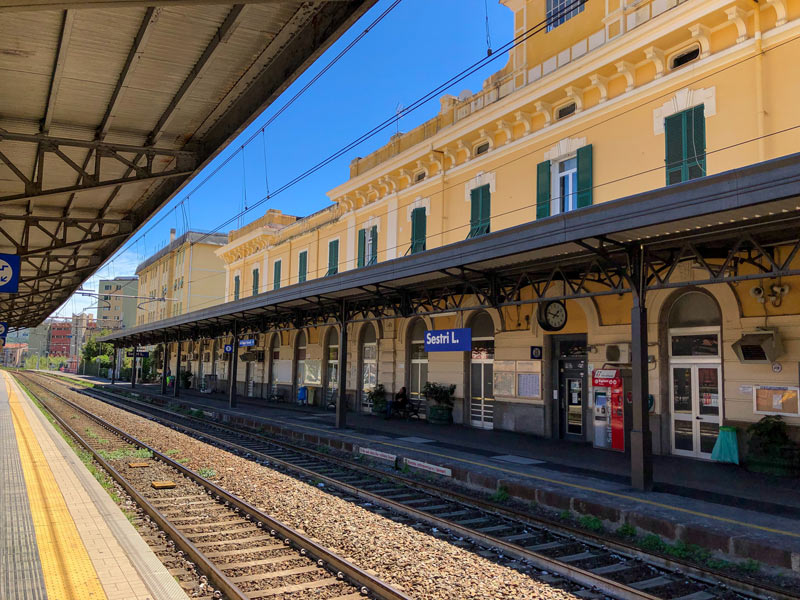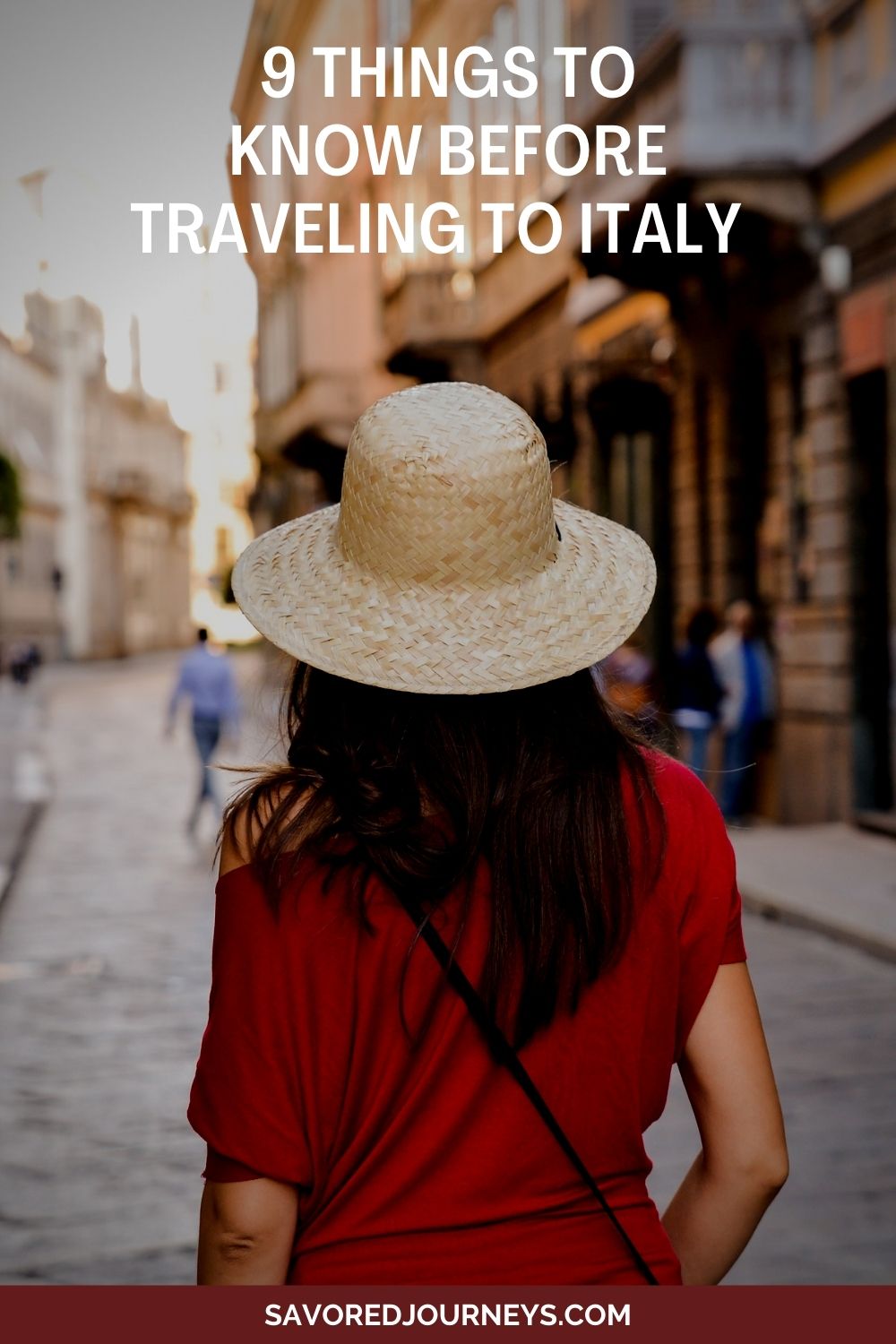This article has links to products and services we recommend, which we may make commission from.
Italy has been on top of every traveler’s list for decades. The country is blessed with beautiful art and architecture, world-class food, exciting culture, and a spoken language that would instantly make you fall in love.
Right now, you’re probably feeling a bit excited, and even a little bit anxious to travel in Italy. While going to Italy can feel a little bit overwhelming at first, we’ve rounded up the best Italy travel tips, suggestions and advice if it’s your first time traveling to this beautiful country.
Here’s more to help you plan
Italy Travel Tips
1. Make Restaurant Reservations

Italians are famous for their home-cooked recipes that have been passed down for generations. While you can still find plenty of walk-in restaurants while you’re there, ideally, you need to make a reservation if you want to go to their famous ristorantes, osterias, trattorias, and wineries.
Chances are, these are always fully booked, especially during the peak season. While you can opt to make your reservation online, remember that Italy’s culture is still very traditional, so you can just give a call a few days before your visit.
Better yet, if you’re staying at a hotel with a concierge, make a list of the places and dates you’d like to visit and let them make the plans for you!
2. Learn Some Basic Italian
Italians speak Italian – that shouldn’t be a surprise. Sure, in most popular tourist areas in Italy you’ll find English speakers, especially in the tourism industry, but you shouldn’t plan to fall back on that.
If you want to enjoy a more authentic experience during your stay in Italy, it’s best to learn at least some basic Italian phrases.
At the very least, learn how to say thank you, please, good morning/evening. It’s also nice to learn how to ask for directions, say excuse me, and to say that the food was delicious.
You might be a little scared to speak it, in case they are annoyed that you mispronounce their language, but don’t worry. Most Italians appreciate your effort to speak their language and not to expect them to cater to your language.
Never underestimate something as small as a courtesy in the local language.
3. Tipping Isn’t Necessary
If you come from a country [we’re looking at you America] where tipping is expected, you might think you need to do the same when you’re in Italy.
Although tips are welcome and usually appreciated, leaving a 20% tip is just not necessary or expected. In fact, it’s way too much. In Italy, taxes are already included in the price. Likewise, if there is a service charge, it will already be listed on the bill.
That means if something costs 50 euros, then you have to pay precisely 50 euros for it. If you really want to leave a tip, it’s up to you, but cap it at 10% or just round up to the next whole amount.
4. Know What to Pack

Putting together a packing list for Italy can be challenging, especially if you’re visiting for the very first time!
Italians are some of the most fashionable citizens in the world, especially in the cities, and especially in Milan, the fashion capital of the world. You don’t have to match their level of fashion, but you should make an effort.
To complicate things a little bit further, the weather and topography can change dramatically as well. From the gorgeous beaches of Puglia to great skiing conditions in the Dolomites during the winter season.
When it comes to packing, stick to the less is more rule; packing light is definitely the way to go. Since you’ll likely go to several locations in Italy, the last thing that you want to bring with you is an oversized suitcase.
It’s difficult to drag large bags across cobblestone streets and in and out of cabs, on packed trains, etc. Give yourself a gift and keep it light. We only ever pack a travel backpack or carry on suitcase when we travel.
We love this suitcase for travel. It’s lightweight and has just enough space to help you pack light.
For an Italy trip, you’re also going to want to pack comfortable walking shoes. Most streets in Italy are hundreds of years old and are either made of cobblestones or black basalt. A sturdy pair of shoes will help you do all the walking you’re in for.
Most cities and villages in Italy require a lot of walking, oftentimes uphill. Cities and towns have restricted driving zones, so make sure you’re in your most comfortable footwear.
As for travel clothes, comfortable layers go a long way. Bring separates that can be paired together in multiple ways, to keep it light, and bring layers that can be mixed and matched to fit the weather and occasion.
For sunny summer days, sunscreen, a trusty hat and sunglasses are necessary. Also bring a lightweight jacket for evenings in summer.
If you’re planning to bring your gadgets, then you need to bring along a power adapter so that you can plug your device into a European socket.
5. Validate Your Train and Bus Tickets

There’s a good chance that you’ll be taking a lot of public transportation on your trip to Italy. Keep in mind that there are two steps to using public transportation tickets. The first step is buying it, and the second is validating it.
A lot of tourists think that once they already have the ticket at hand, they’re ready to go. Let’s say that you’re taking the train. Before you’re permitted to board, you need to first insert your ticket in one of the yellow validating machines, found at the entrance of the train platform or onboard the bus.
The validation will mark the exact date and time of your ride so that your ticket can only be used once.
In all big cities in Italy you can easily take the train between main attractions. Find the map online or ask for one at the hotel front desk. If you have your phone with a data plan, you can use Google to navigate between stops. Google gives the name of the train you should take.
→ Save money on train travel in Italy. See all Italy Eurail passes here.
6. Skip the Currency Conversion Desk
While this is something a lot of avid travelers already know, it’s still worth mentioning, especially if it’s your first time to visiting Italy. Skip the conversion desk at the airport, and head straight to the ATM to get your local currency.
You can avoid the outrageous exchange fees and unfavorable conversion rates. There are always ATMs available in the airport, at train stations, even at most hotels.
Many small shops and restaurants in Italy are a bit traditional, and they prefer cash payments to credit cards. Even though you will still mostly use your credit card for purchases, you should always have some cash on you.
It’s also good to have smaller denominations, so you can easy pay small bills without needing to make change.
7. Beware of Pickpockets
Busy train stations are common locations for pickpocket activity in Italy. Usually, pickpockets will work in pairs, distracting you, and will make a swipe for your wallet, phone, or watch.
Always leave unnecessary things in your hotel room. If you’re carrying a mobile phone, be sure you tuck it away well. Don’t carry it in your hand as you walk down the street and don’t shove it in your pocket where it can be easily detected by a pickpocket and removed without you even knowing it.
As long as you keep your wits with you, wear a money belt, and are always aware of your surroundings, you should be fine.
→ See other common travel scams to avoid.
8. No Cappuccinos After 11 AM

Italy has a lot of customs when it comes to food. One of these is that a cappuccino (or any coffee with milk, for that matter) should only be drank during the morning. Ordering a cappuccino after a meal or as your afternoon cup of coffee is not done in Italy.
Why? Because most locals don’t like the idea of drinking milk with a full stomach. Sure, you can order it anyways, but do expect some side-eye or even a small lecture about indigestion.
If you want to fit in, order an espresso any time after 11am. Espresso is often drank while standing at the counter in Italy. It’s just a quick pick me up.
9. Don’t Stand in Lines

Italians avoid lines as much as possible. So whether you’re boarding a plane, ordering food at a fast-food joint, or waiting to get movie tickets, be prepared that those lines will more resemble a mob than a queue.
While it might seem weird for foreigners, this is just a regular occurrence in Italy. So make the most of it and wiggle your way into the crowd. It’s rare that anyone will get angry at you for “cutting the line” because most of the time, they’ll also be struggling to get to the front.
Final Thoughts
These are just a few of the important things you need to know when you’re traveling to the beautiful country of Italy for the very first time.
Like other foreign countries, it also has a lot of customs and quirks. It’s better to be aware of ahead of time so that you can make the most of your time.
If you’re hitting up Italy as part of a larger trip to Europe, be sure to check out our 2-week Europe Itinerary.
Planning for Europe? Here’s more
About the Author – Geraldine Mills is a self-confessed wanderlust from the land down under, Australia! She funds her adventures by working as a travel writer. She loves sharing the allure of backpacking and being one with nature. Visit this website to check out her other published articles.
Like this post? Save it to Pinterest.

9 Things to Know When Traveling to Italy








